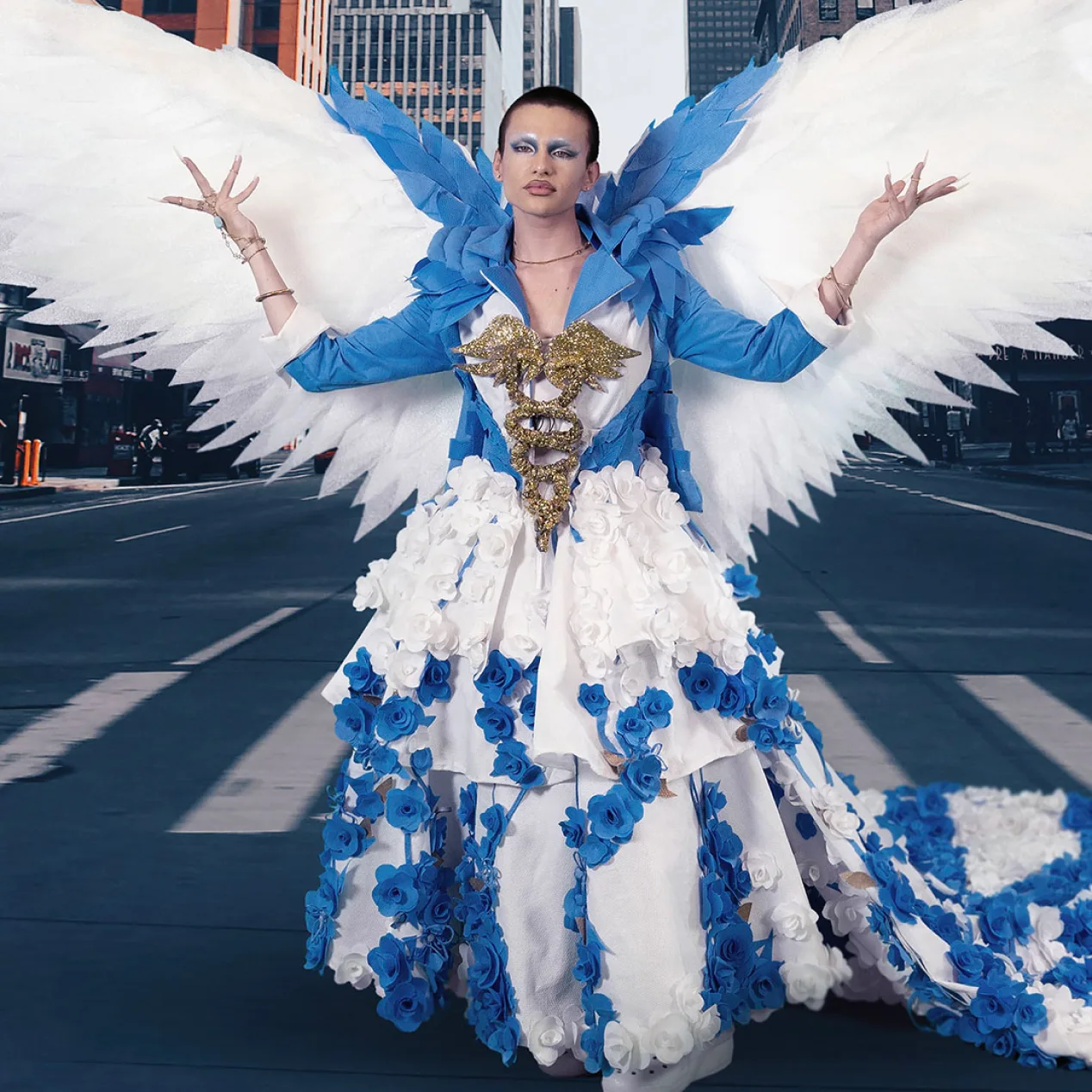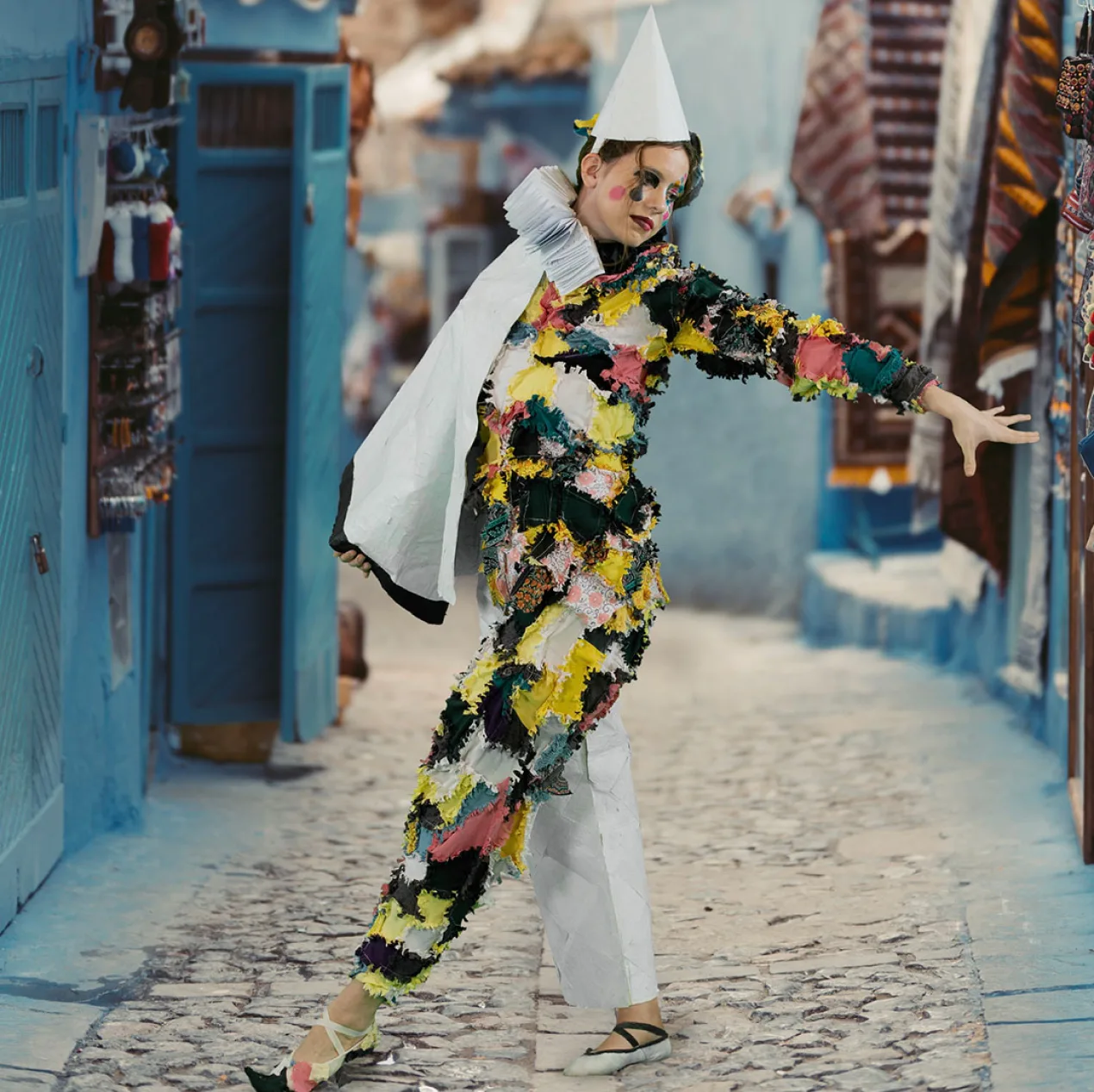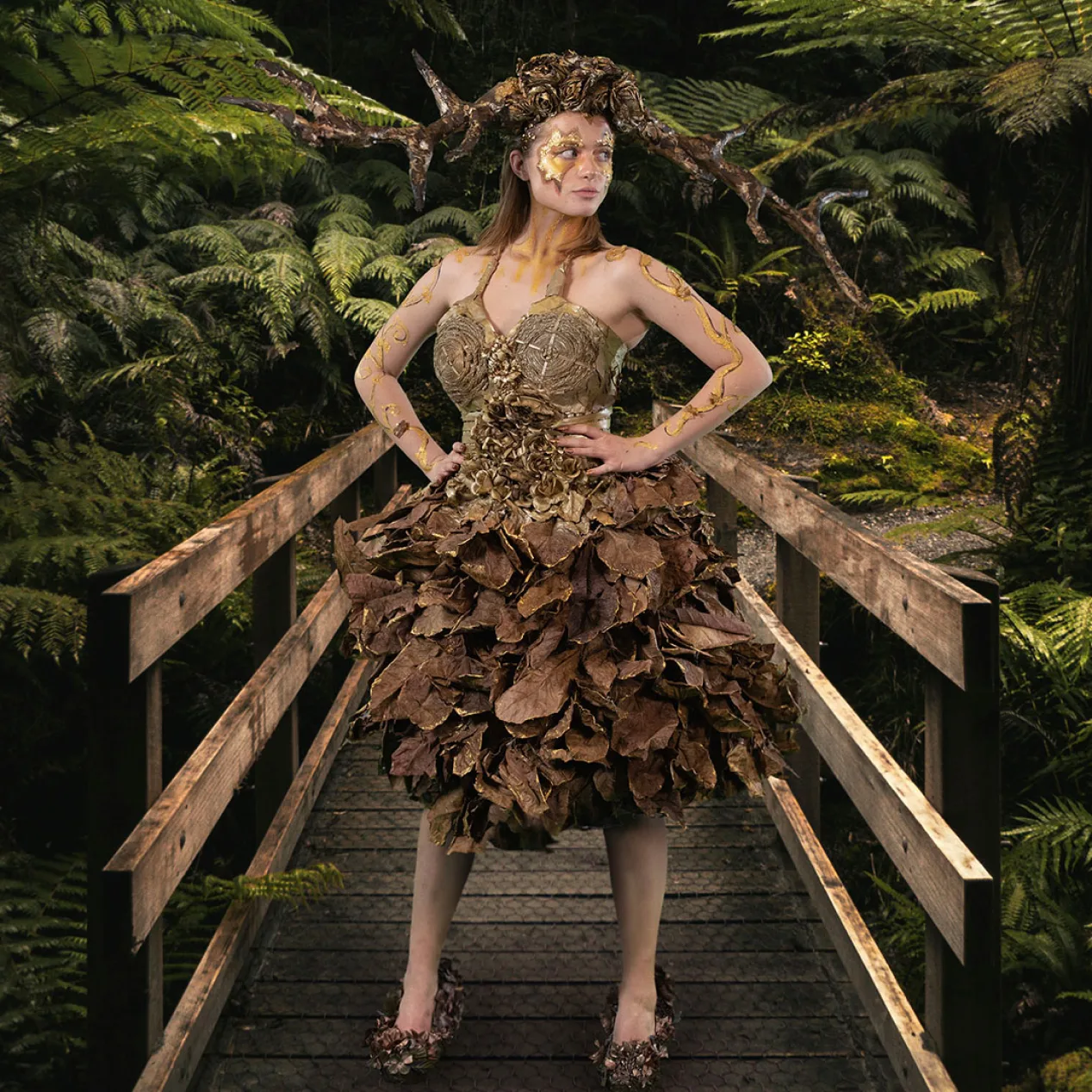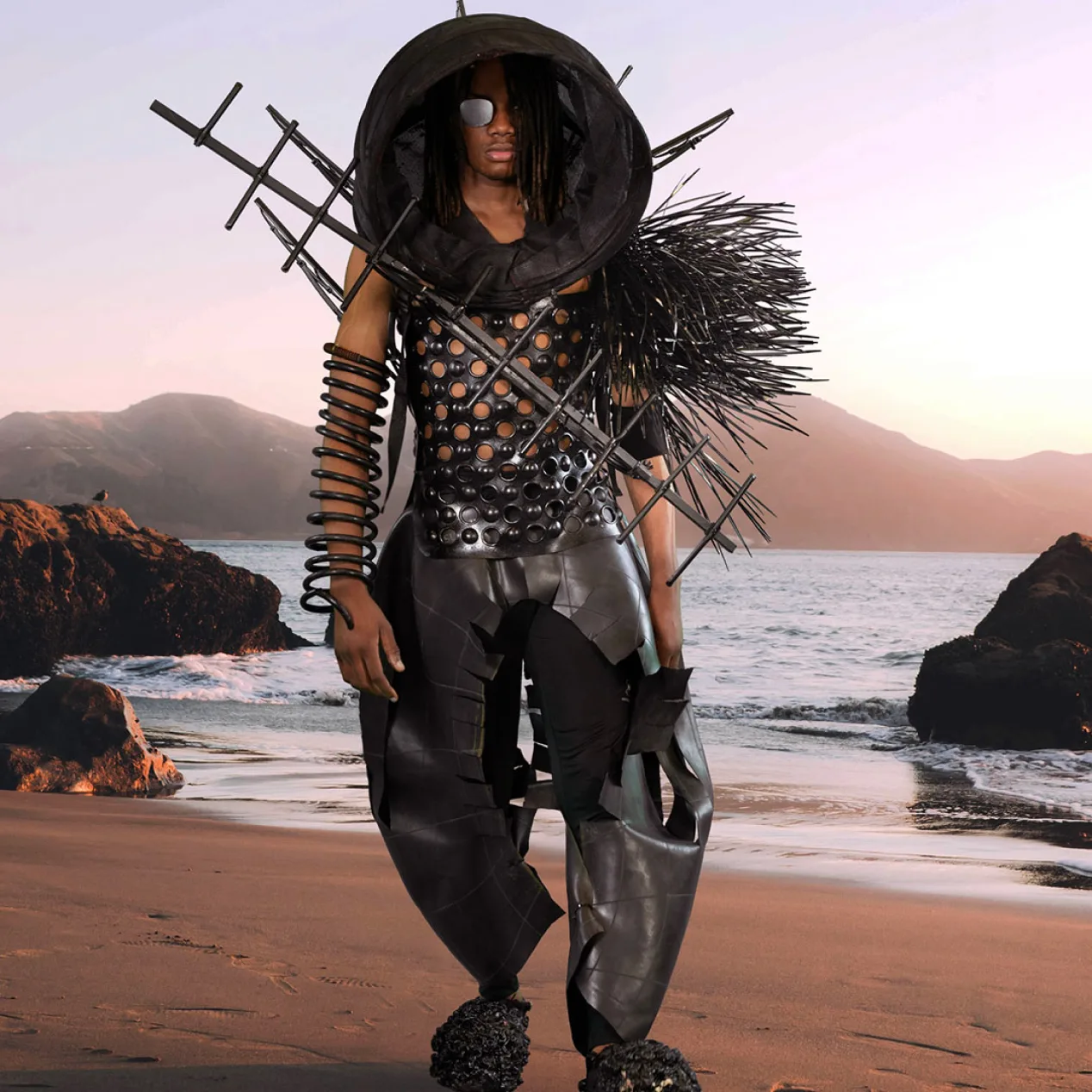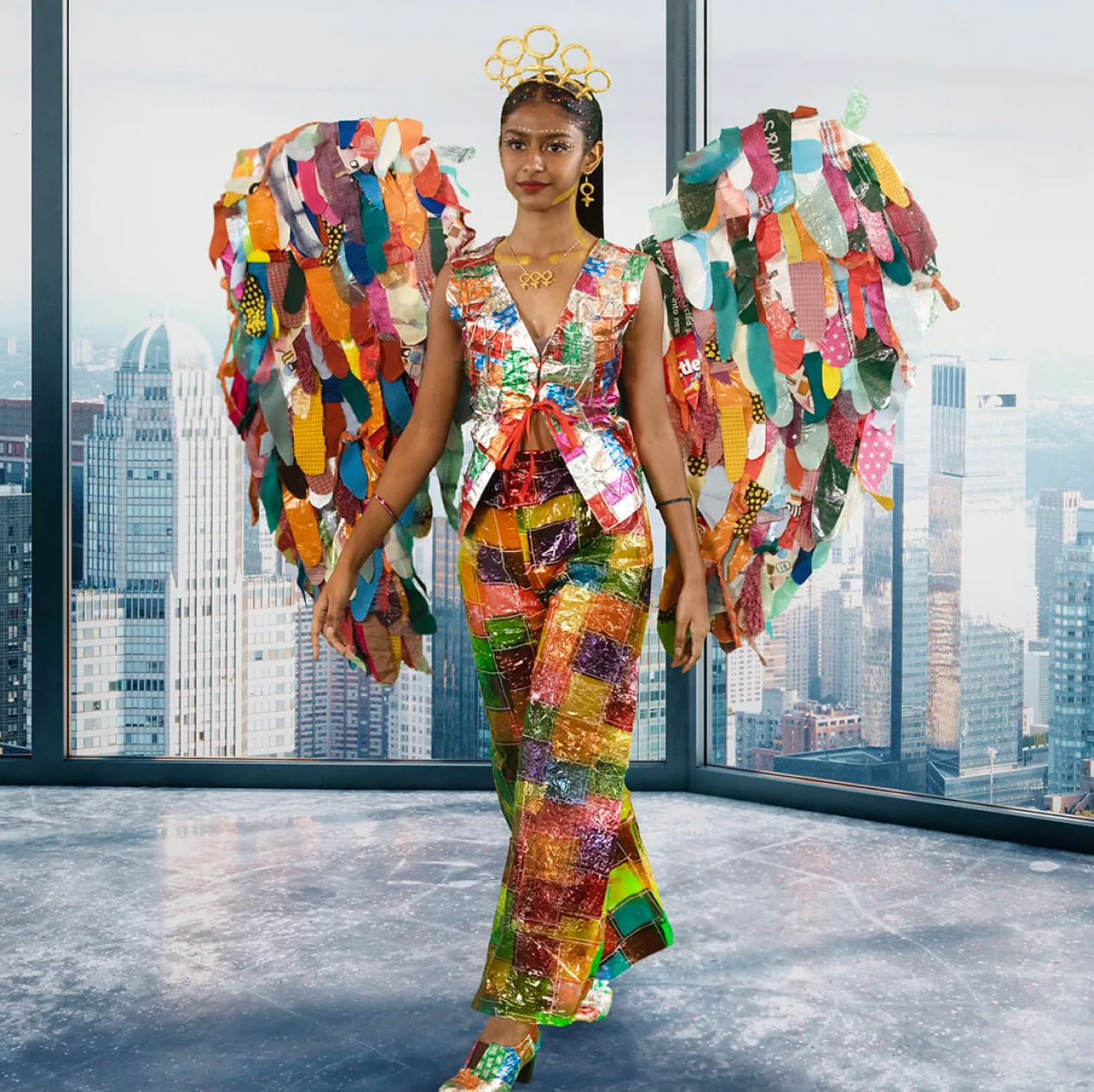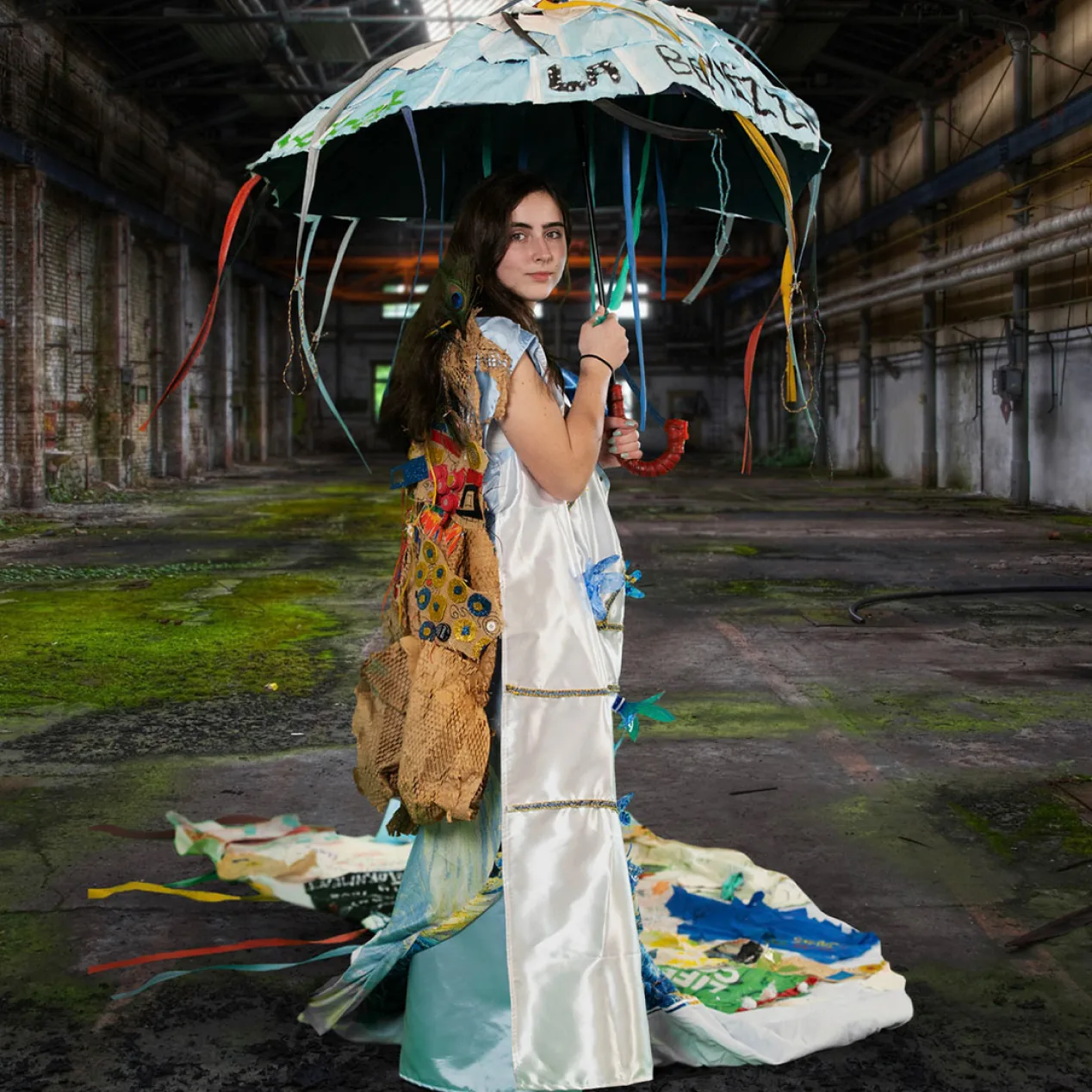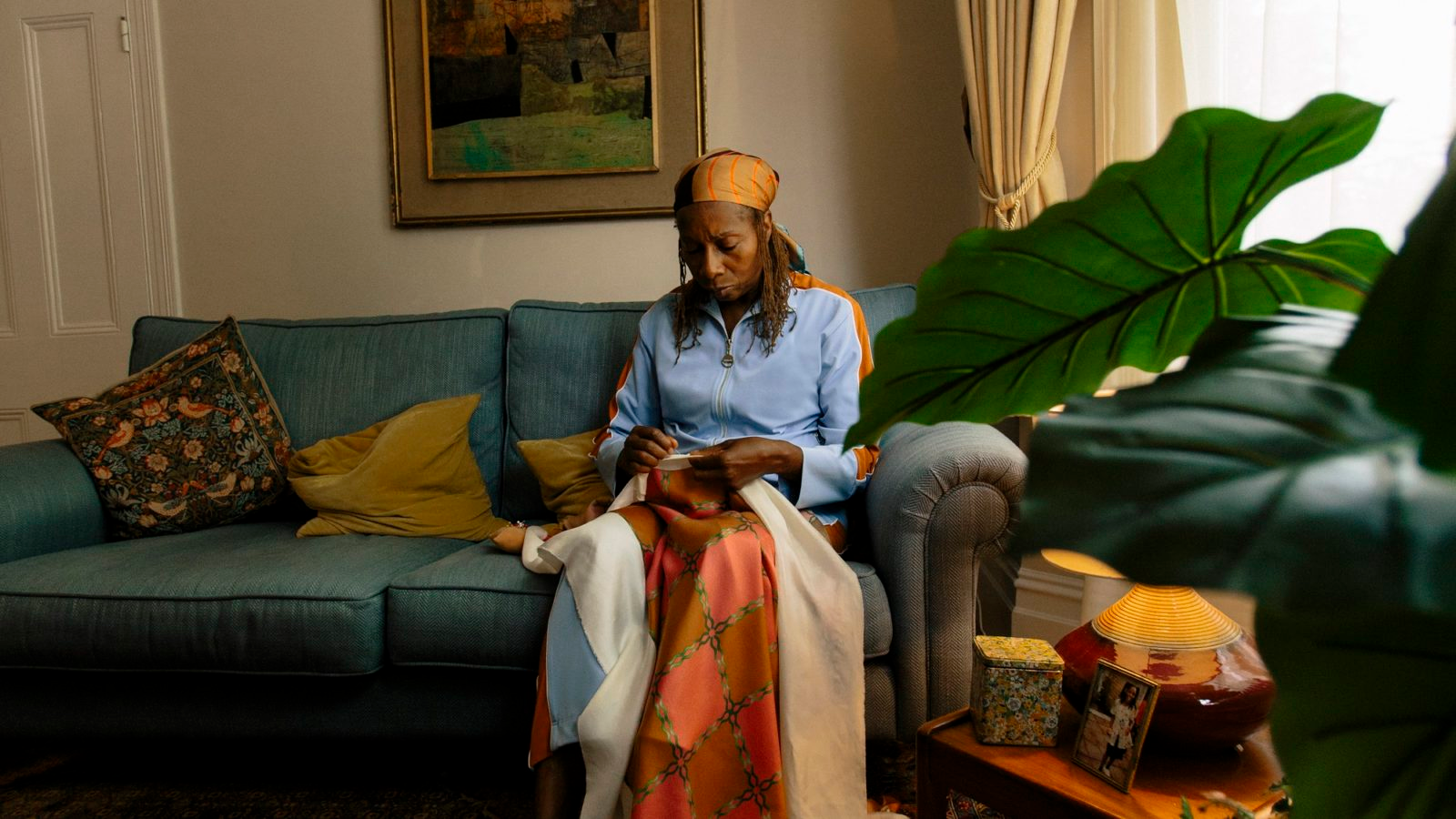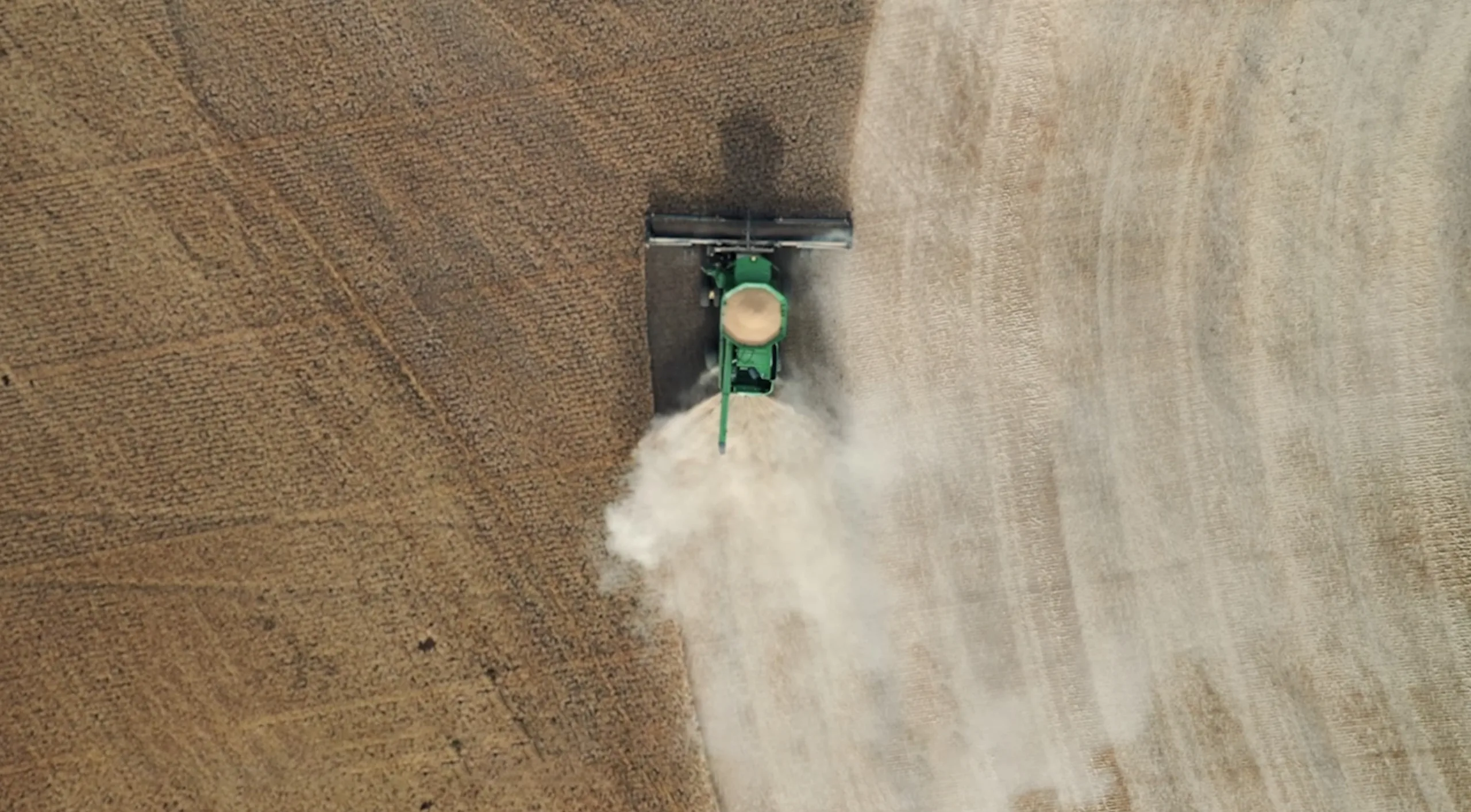When you look at CJ King’s dress, two things are immediately clear—its beauty and its message. It’s an elegant, powerful salute to medical staff and frontline workers who work tirelessly to keep our communities safe.
But look a little closer and you’ll discover an even deeper story. The dress, called The Nightingale, is made from recycled medical blue wrap. It’s not only an ode to community, but an example of how fashion can be zero-waste, emission-free, and a powerful catalyst for a more sustainable planet.
Technology binds us. We are the age of technology. It is my generation.
That, after all, is the mission of Junk Kouture. It’s a worldwide creative platform set on inspiring young people aged 13 to 18 to create upcycled fashion that brings attention to the issues facing society at large. Junk Kouture’s educational platform currently reaches over 850,000 students in 1,150 schools in six countries. Within the next ten years, Junk Kouture hopes to empower a billion young people around the world with creativity and sustainability.
Microsoft partnered with Junk Kouture because STEAM (science, technology, engineering, art, and mathematics) plays an essential role in helping this new generation of talented, eco-conscious designers use their passion to create a better, healthier world. The talent of these students is already staggering; Microsoft’s tools allow them to make the most of their creative spark, and truly bring their most ambitious pieces to life. We also invite more and more young people to exercise their imaginations in upcycling through apps like Microsoft Flip, that help educate and inspire entire communities. After all, sustainability must be a cause rooted in inclusivity and equity; Junk Kouture has already made so much progress in working toward this, and in partnering with Microsoft, hopes to use STEAM to help bring even more young, forward-looking creators to the table.
Smart, sustainable design
This year’s Junk Kouture competitions aligned with the United Nations (UN) Sustainable Development Goals. And every design had to be made from completely upcycled material. To make that possible, each team applied STEAM in their creative process, from initial research to final assembly.
Meet the makers
Microsoft spoke to designers in New York, Paris, Abu Dhabi, Dublin, London, and Milan—about their pieces and the role that STEAM plays in their creative process.
More stories
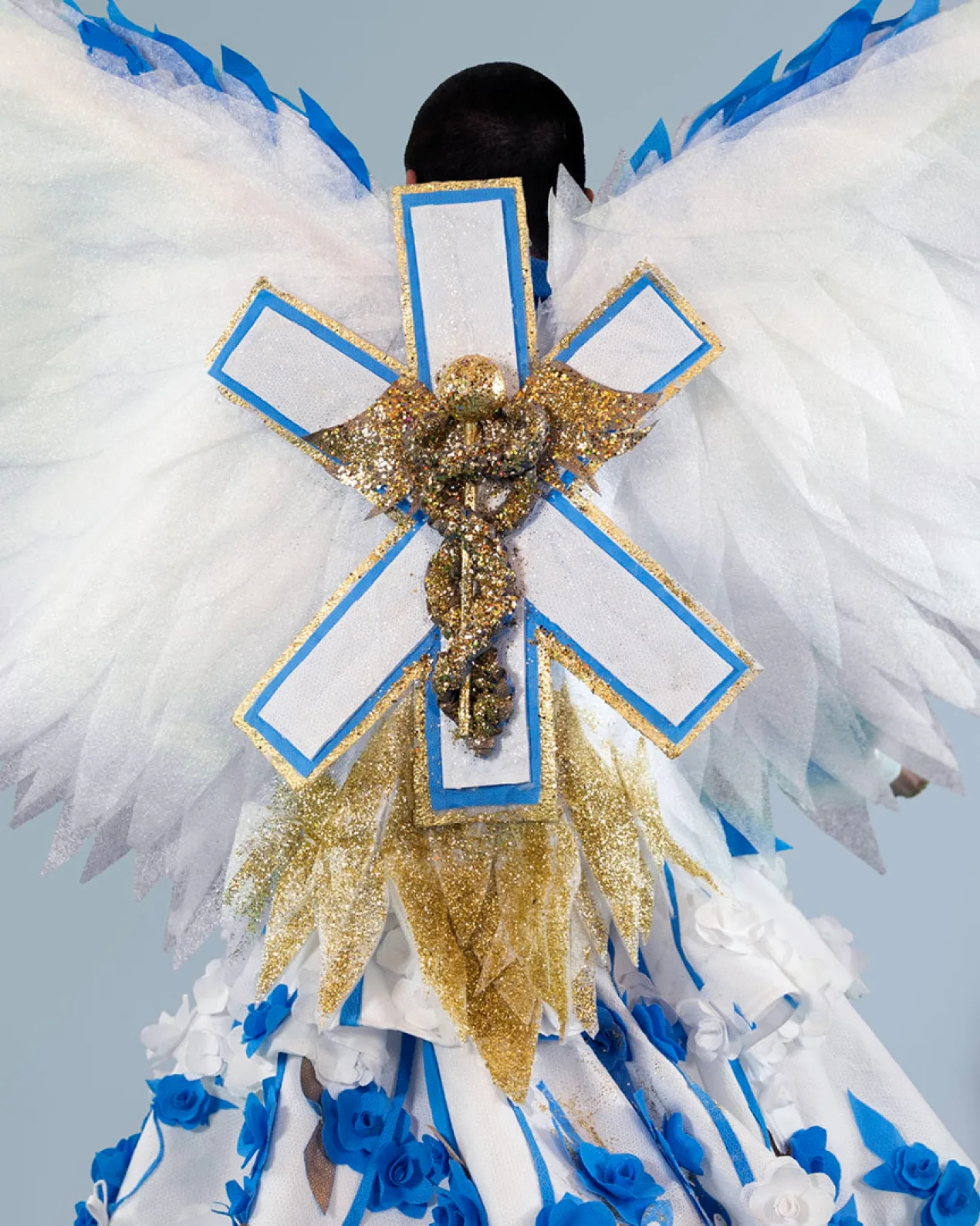
A love letter to nurses
Made from recycled blue medical wrap, this dress celebrates the work of medical staff, and shows the importance of science and technology in creating sustainable cities and communities. The centerpiece is a gold caduceus—a winged staff with two serpents wrapped around it—that acknowledges the symbol of healing.
“We had to do scale. We had to do length with everything. We were using all different types of patterns…to figure out the right shapes, and we finally figured it out. Everything came together,” says CJ King.
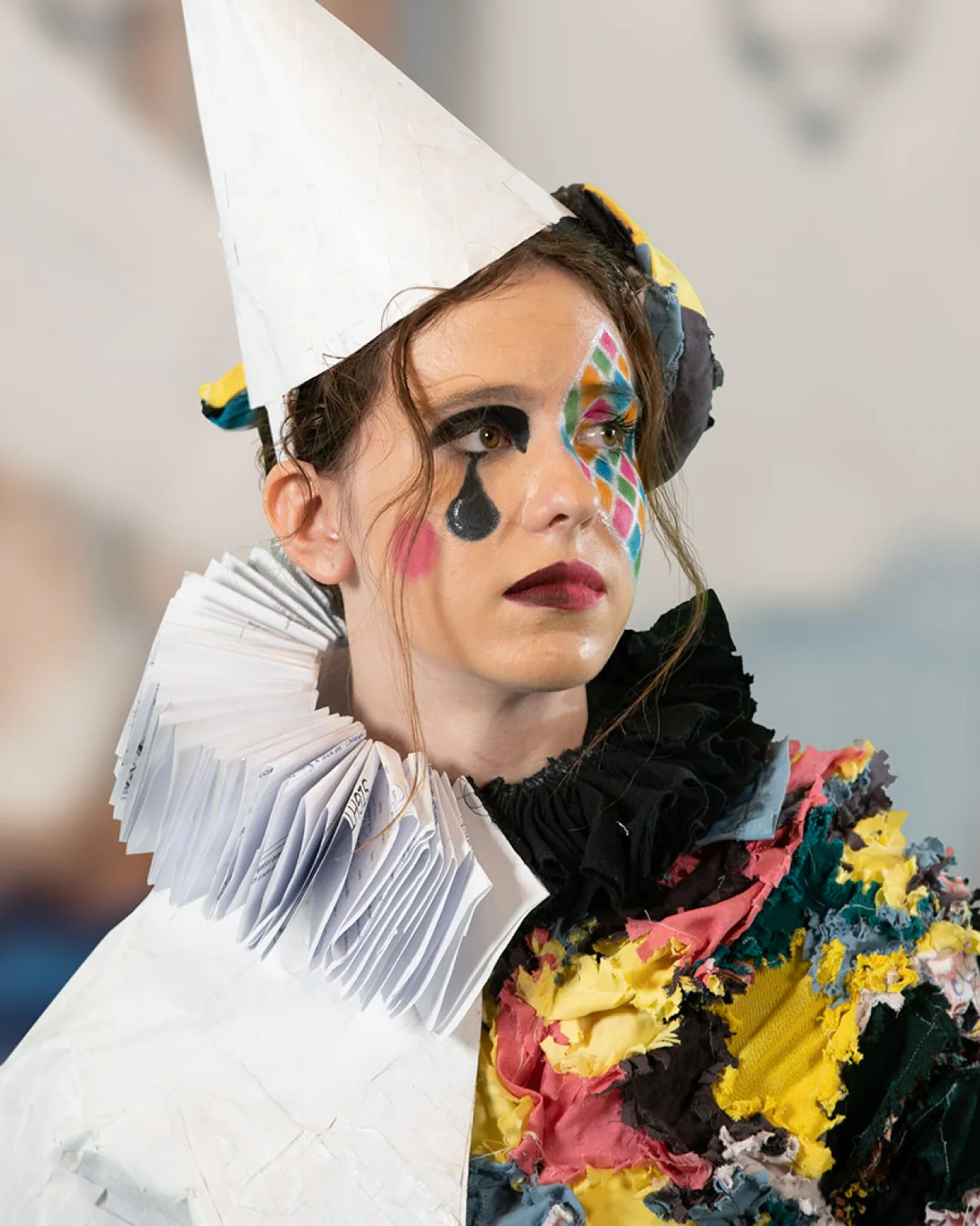
Upcycling for equality
With a clear divide down the middle, this piece is a commentary on a major obstacle in sustainability: class division. Displaying two characters, one side of the suit is made entirely from paper and glue—200 sheets, to be specific. The other, old clothes that would normally be thrown away, amounting to over 100 irregularly cut pieces of cloth, dyed naturally with turmeric, and sewn together with shoestrings of ballet slippers.
“Every single aspect of both sides of the design was made up of squares or different quadrilaterals, which meant that every single different square was accounted for. The most important part with technology was the research—which materials to use, and the right way to assemble them,” says Elizabeth Makhotina.
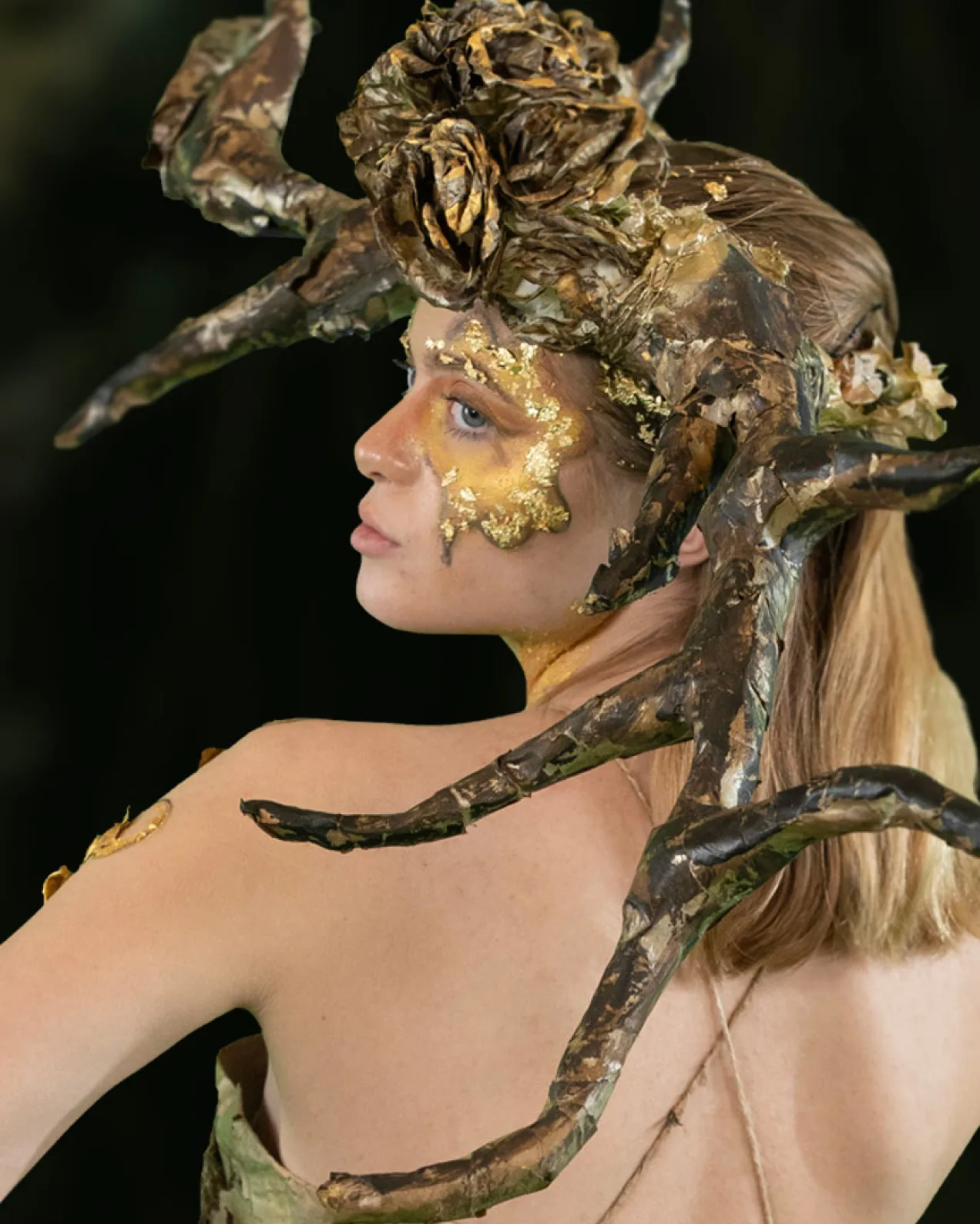
Modeled after nature
Gaia’s design was made in the image of Mother Nature, using natural materials that challenges “typical” fabrics and textiles you see in fashion. Throughout, you’ll see palm leaves and twine woven together, with vines used to support the numerous layers of earth.
“STEAM was important in order to measure the dress and make sure that everything fit, and [measure] the design of it itself,”says Olivia Reed.
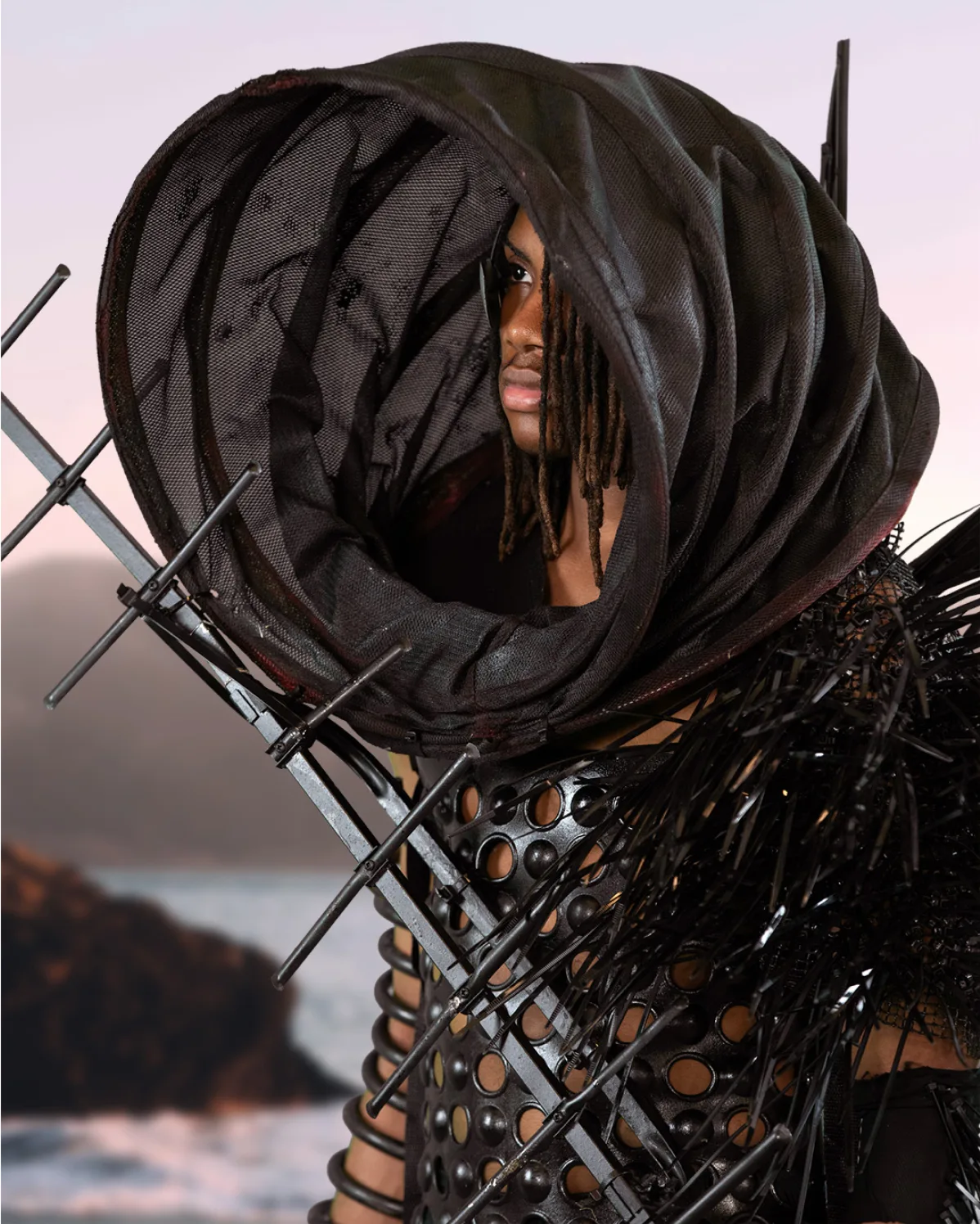
Forged for tomorrow
This suit of post-apocalyptic armor is a cautionary tale on why refusing to educate ourselves about our planet could lead to a bleak future. It’s made from discarded tools, like an old aerial antenna on the chest, car wipers on the back, and tractor wire serving as the interior lining.
“You need math to measure all of these things. We used online resources as well, to see which materials would not break, which would last longer,” says Solomon Edward.
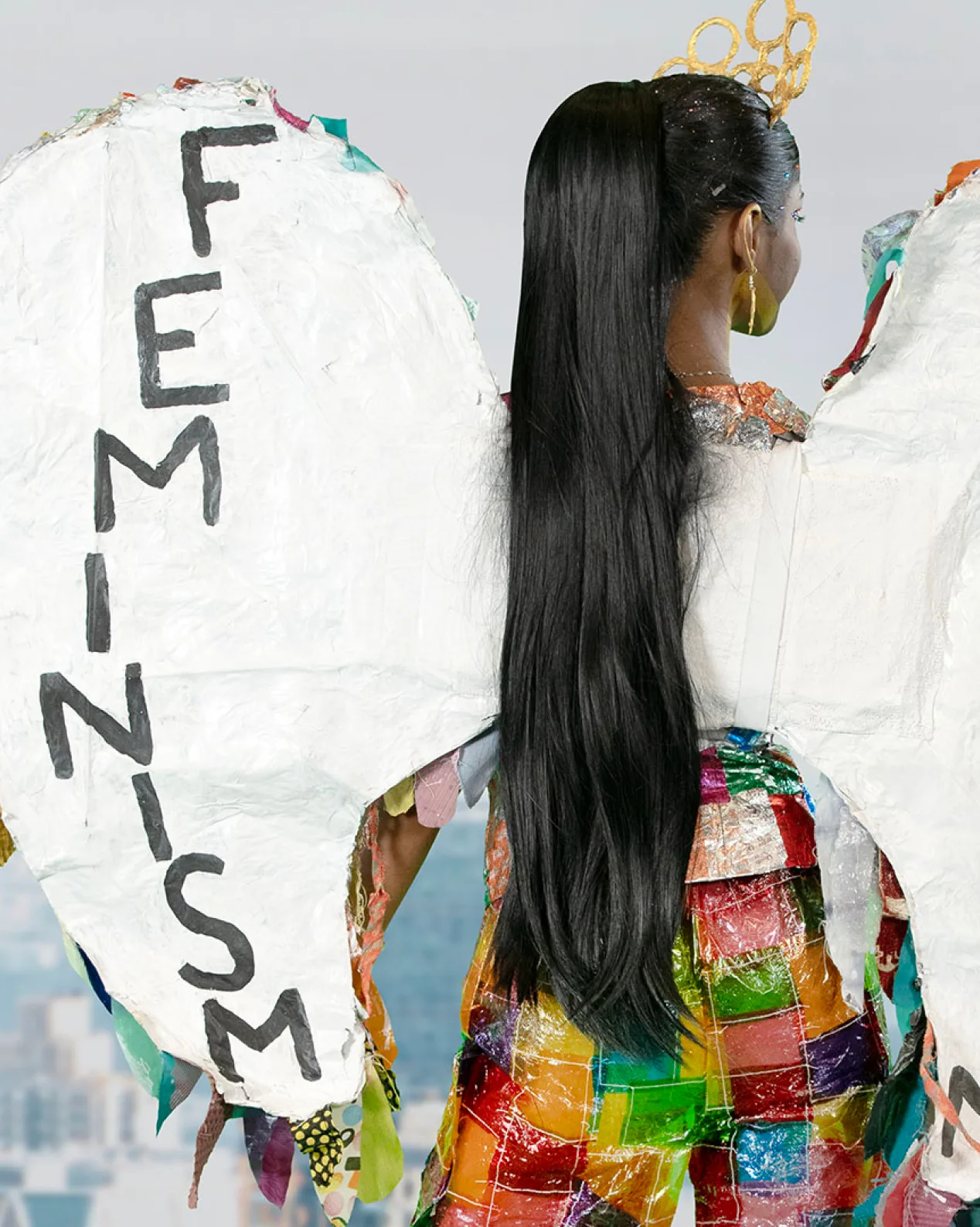
Women taking flight
This suit empowers young women to soar above the patriarchy and take flight in the fight for gender equality. Math was crucial to the design that includes a patchwork of sweets wrappers, a corset of paper napkins, and wings cut from old clothes and plastic bags.
“There’s a lot of layering happening, and the different dimensions as you can see, but Microsoft technology helped us a lot on the dimensions and the layering and the shapes,” says Dominica Kodeeswaran.
When you recycle stuff, it doesn’t need to be bland—it can be colorful, radiant, and vibrant.
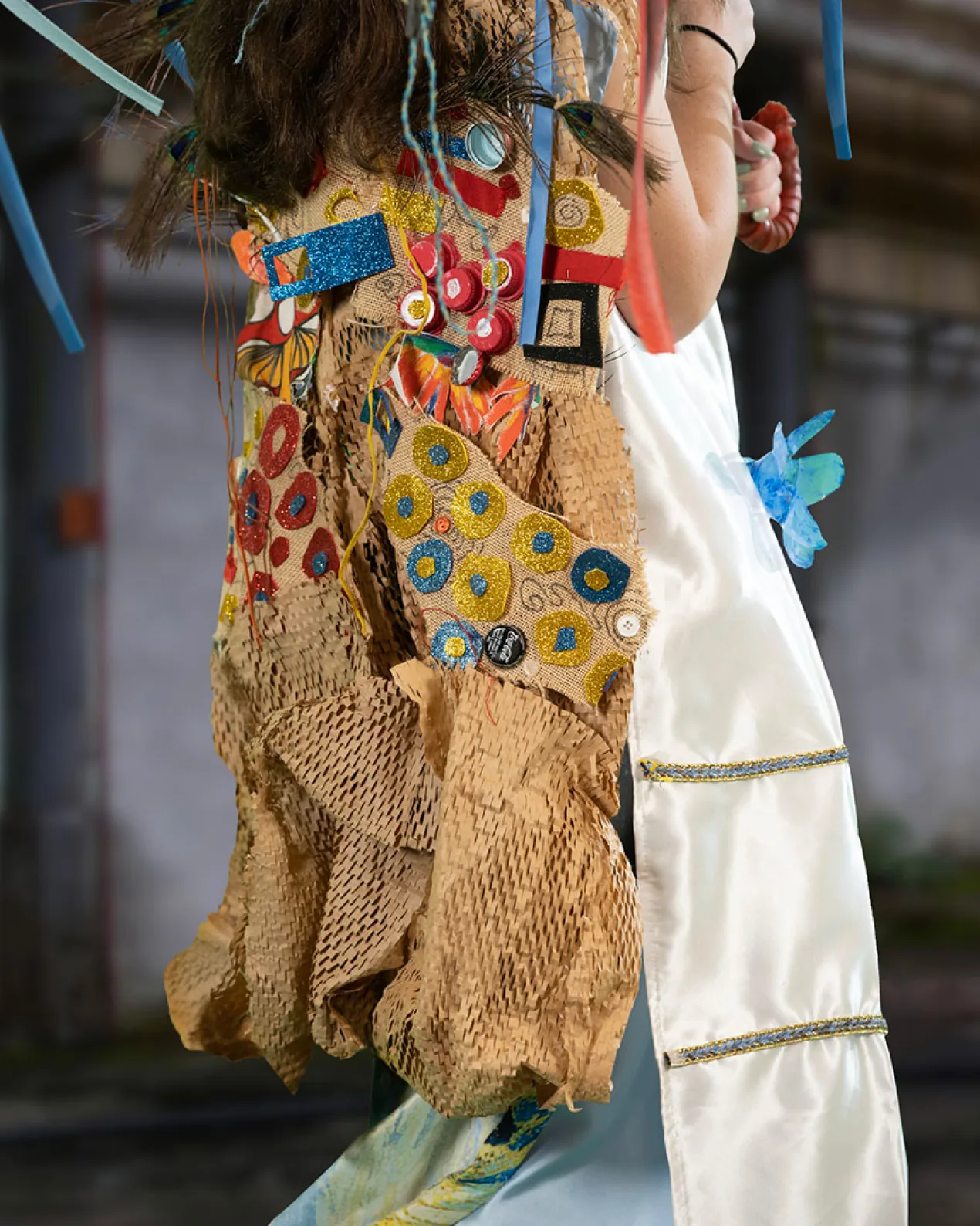
Wearable art & poetry
Our everyday habits with everyday junk can have a big impact. So Adalyn’s team turned the most common everyday junk, like plastic bottles and food aluminum, into a work of art, with a design inspired by Van Gogh. The train of the dress is made from plastic shopping bags turned into drawings and texts about nature. They even reconstructed a used umbrella from recycled surgical masks.
Adalyn’s team wove STEAM into the dress itself, using math to find the perfect dimensions for the dress, and science to research specifically how their dress’s materials would have originally polluted the planet—had they not become beautiful fashion.
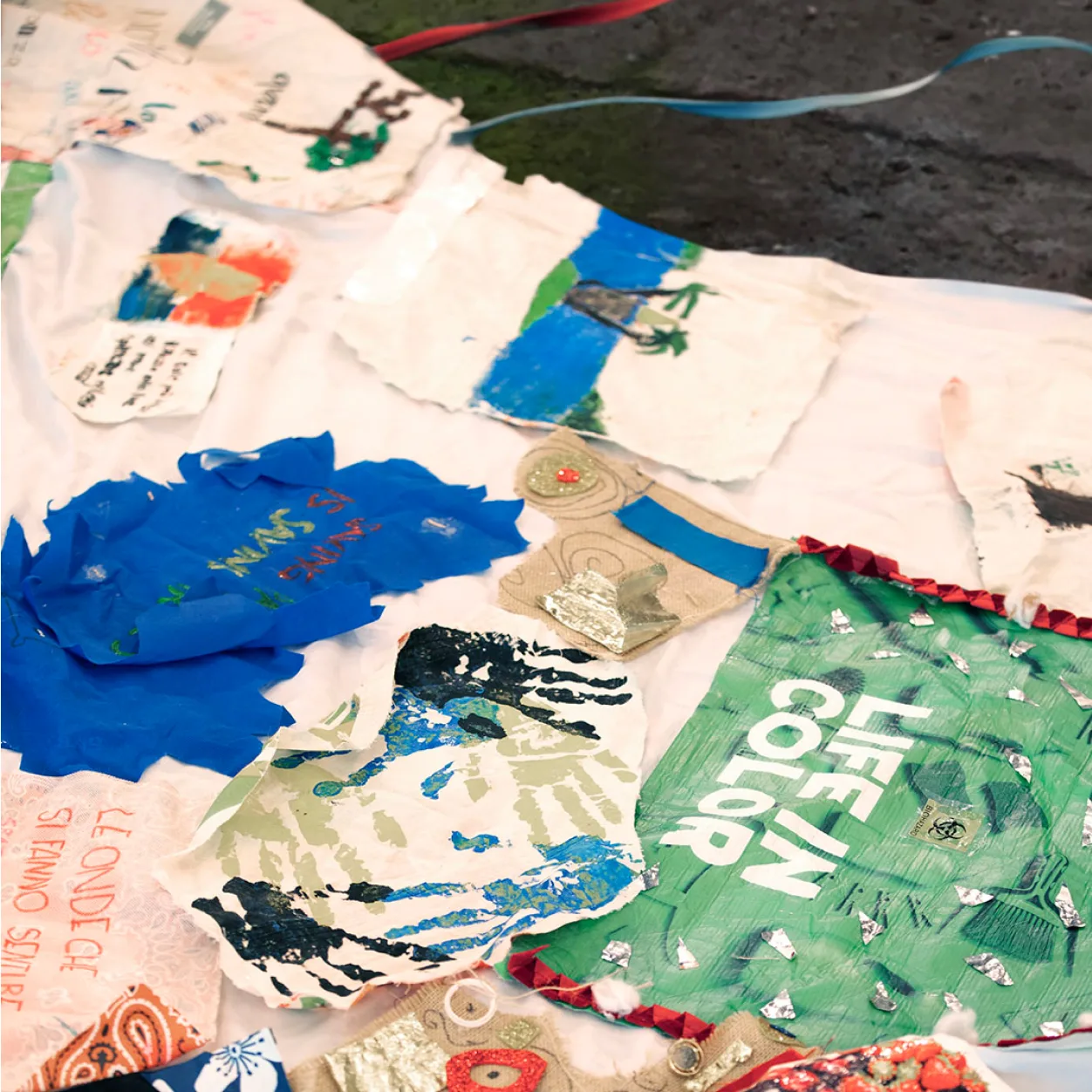
Beyond the runway
Microsoft and Junk Kouture are helping the next generation form a community—one that puts sustainability, creativity, technology, and people at its center. It’s a community that looks out for one another, shares ideas for how to improve this one planet we call home, and truly values things like equality, action, education, climate protection, and more. It’s one that proves, yes, we can turn passions, hobbies, and even industries like fashion into real change for tomorrow.
So think twice next time you toss that piece of junk in the trash. Tilt your head, shift your perspective a bit, and there’s no telling what it could become next.
Flipping our style
You don’t have to create an elaborate piece like these to have an impact either. Microsoft and Junk Kouture want to help everyone practice sustainability in their own creative way, every day.
So, with the Flip app, Junk Kouture has produced a series where you can learn how to create in a sustainable way, just like the Junk Kouture participants. It’s just another way that STEAM and tech play a role in helping us be more eco-conscious, sustainable, and creative. Doing all three is easier than you’d think—and a whole lot of fun too.
Be the change
Join forces with Junk Kouture and Best Buy to recycle and save
Students are talking about a greener future and creating solutions at New York’s Glen Cove High School, Fordham High School for the Arts, The High School of Fashion Industries, and Jacqueline Kennedy Onassis High School.
These schools are where young, aspiring designers are using Microsoft Surface Pro 9’s to help fuel their creativity and passion. Through Junk Kouture, a sustainable fashion design competition, New York-based students upcycle junk into wearable pieces that hold a global message about recycling—specifically e-waste recycling for a healthier planet. It’s a practice at the heart of Junk Kouture, exemplifying the art of making something beautiful out of what many consider waste.
Junk Kouture, Best Buy, and Microsoft have collaborated to support these bright minds and give everyone an opportunity to be the change. Junk Kouture participants are buzzing with ideas, ready to show the world how waste can find a second life. But upcycling junk into stunning art pieces isn’t the only way they’re helping reduce waste.
